- February 20, 2024
A concert series that provided a glimpse of the abilities of new-age vocalists
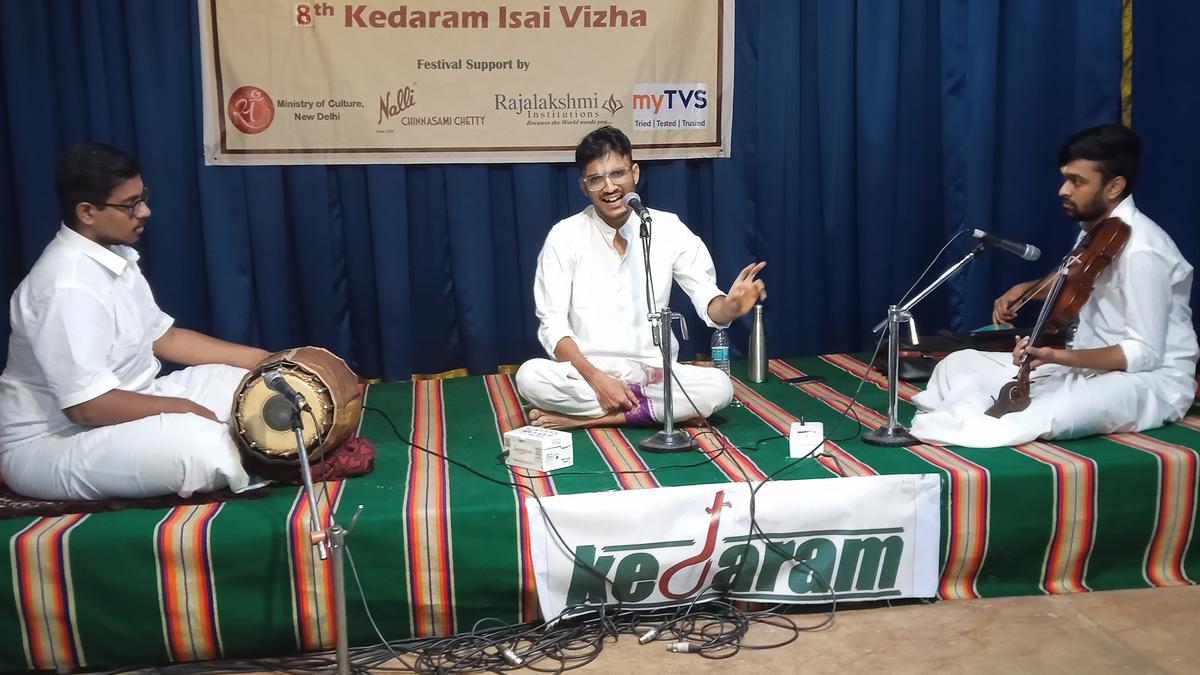
Ranga K. Bhargav.
| Photo Credit: Photo courtesy: Kedaram
When sweetness gives way to robustness during formative years, a vocalist develops an open-throated singing style. After all, music ideally gains fineness with age. Also, an expansive ragam tanam pallavi is no improbable task for youngsters with dedicated homework. These are perhaps two major takeaways of a recent Youth Concert Series by Kedaram.
Featuring five vocalists, the festival provided a sample of the abilities of an emerging generation. The event held at Raga Sudha Hall also exposed certain areas that call for better output. The vocalists were Dhanush Anantharaman, Vignesh Krishnamurthy, K. Ranga, Ranjani Radha and Parvathi Subramaniam.
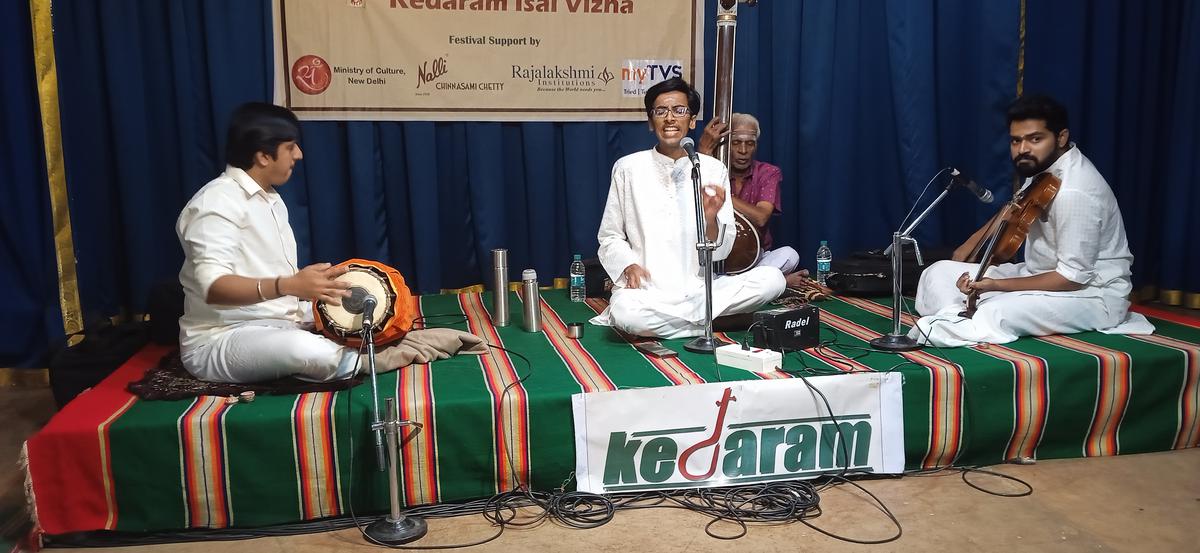
Dhanush Anantharaman sang an open-throated essay of raga Kamboji.
| Photo Credit:
Photo courtesy: Kedaram
Promising talents
If centrepieces best demonstrate the merits of one’s Carnatic artistry, then all the five musicians bore the promise of eventually evolving into fine practitioners. Their accompanists may ripen even before. This review focuses on the main suites by these youngsters. Dhanush, alone, came up with an RTP, while the other four chose kritis as the piece de resistance. Among them, Vignesh and Parvathi happened to go for the same raga as well as composition.
It was half-way through his 125-minute concert Dhanush took up Kamboji, just after re-tuning the tanpura amid a similar engagement by Madan Mohan on the violin and Nikshith Puttur on the mridangam. The vocalist straightaway entered the middle notes of the raga. If the melody is inherently exuberant, Dhanush’s voice is suitably chirpy. Making a quick round of the upper portions of Kamboji, he let the alapana settle by resuming the opening thread at a slower pace. The frills gave way to long-drawn notes. There were a couple of slips, but Dhanush’s penchant for throwing the voice worked well to the effect of the raga. Pleasing animation defined the top registers.
Madan’s solo response was neat. So was the subsequent tanam, where Dhanush displayed best an allegiance to the Semmangudi style — his teacher being Amritha Murali. ‘Ambhojanaba mamava’ in two-kalai adi-talam led to swaraprastara, which featured three other ragas. Along the overarching solfa sequence, the vocalist employed Malayamarutam, Bahudari and Nattai in a reverse order. Nikshith’s tani avartanam wound up the package of 50 minutes. The pre-main piece was ‘Tillai chidambaram’ (Purvikalyani) by Gopalakrishna Bharathi.
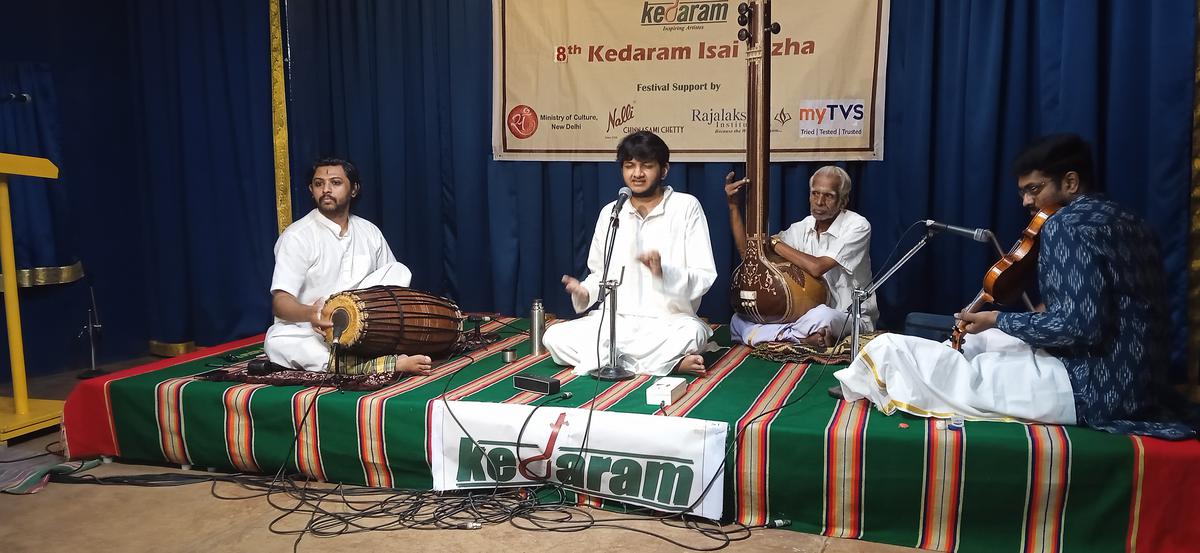
Vignesh Krishnamurthy.
| Photo Credit:
Photo Courtesy: Kedaram
Vignesh, too, sang Kamboji, but it was in the first half. ‘Lambodaram avalambe’ by Mysore Vasudevachar. Principally, he opted for Kiravani, the alapana of which faced hiccups down its 10 minutes. Initially, the voice resisted plumbing the lower octave even as the vocalist soon aired phrases that gave clues to the kriti: ‘Kaligiyunte’ (Tyagaraja). The upward movements faced constraints; the highest note Vignesh hit went off-key too. Violinist M. Shrikanth sounded more seasoned. The vocalist’s kriti rendition was tidy, though issues persisted during his travel from one swara to the other. S. Kavichelvan (mridangam) rolled out a good tani avartanam.
If Vignesh’s 110-minute concert bore an evident influence of his mentor T.M. Krishna, the next day’s recital by Ranga carried occasional borrowing from Sanjay Subrahmanyan’s signature enunciations. The pre-main Latangi was one instance, with ‘Venkataramana’ (Patnam Subramania Iyer) being the kriti. Papanasam Sivan’s ‘Nambi kettavar’ in racy Hindolam worked as a good filler ahead of the pivotal Karaharapriya.
The alapana, as if in a hangover, started off pretty speedily. Soon it became less hurried. Ranga’s voice is somewhat husky and his sketch of the 22nd melakarta raga concluded with strains that sounded uncannily close to kavadichindhu. Composer Sivan made a re-entry: ‘Janakipate’ in eight-beat Adi was the selection. Bargava Vignesh (violin) and Sannath Parameswaran (mridangam) were a healthy presence in the 100-minute kutcheri.
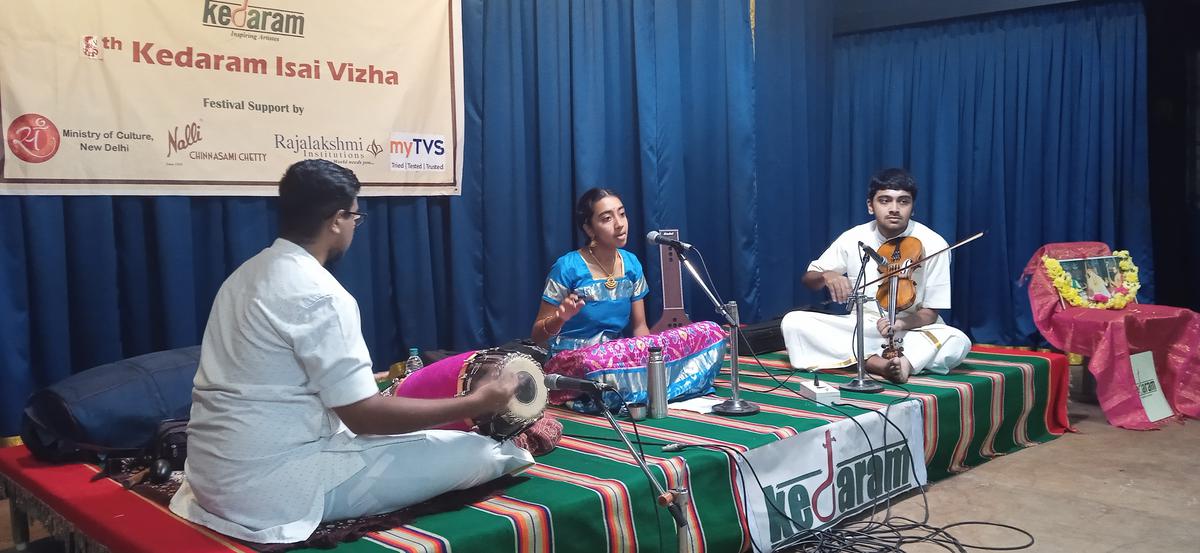
Ranjani, student of Vignesh Ishwar, rendered a peppy Thodi.
| Photo Credit:
Photo courtesy: Kedaram
Peppiness of the central piece was as well the character of the Thodi by Ranjani. Learning under Vignesh Ishwar, her ‘Koluvamare gada’, after a frills-filled alapana, featured a flawless niraval and swaraprastara. Parur M.K. Ananthalakshmi (violin) and Kaushik Sridhar (mridangam) supported eminently. (The pre-main piece in refreshing Sriranjani, too, was Tyagaraja’s ‘Marubalka’.)
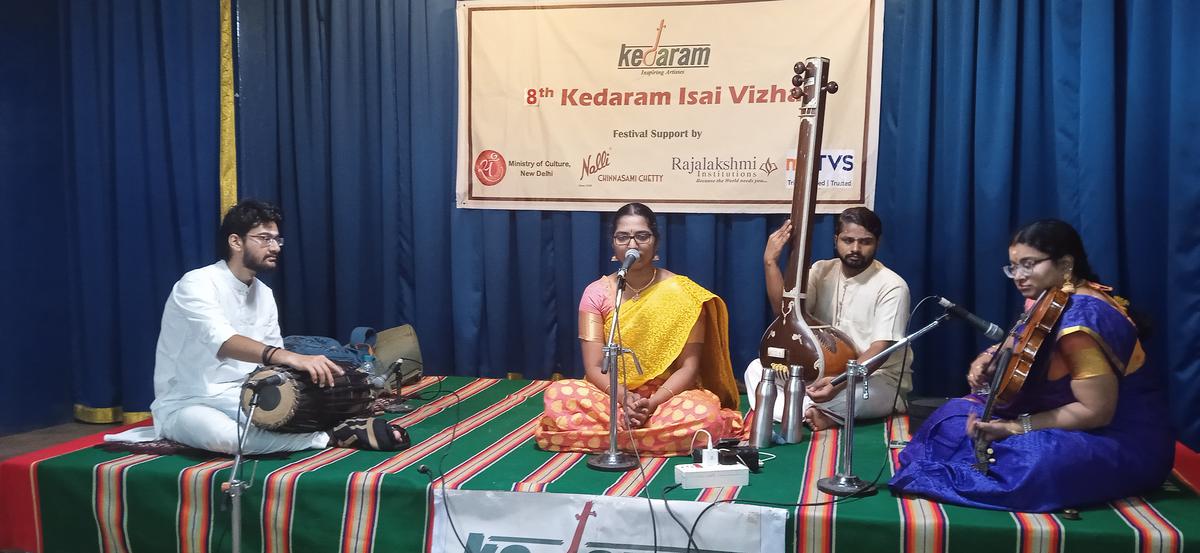
Parvathi Subramaniam’s Kiravani raga essay stood out.
| Photo Credit:
Photo courtesy: Kedaram
If Ranjani owns the ripest of throats among the five, Parvathi (the youngest) can appeal better with a sharpened voice. The 15-year-old’s Kiravani package sparkled with microtones that lit up her alapana as well as the Tyagaraja kriti. Yet slips robbed some of their charm. More stage experience can replace her happy-go-lucky attitude with academic studiousness. On the violin was Skanda Subramaniam, while Sannath, again, played the mridangam at the one-and-a-half-hour concert.




